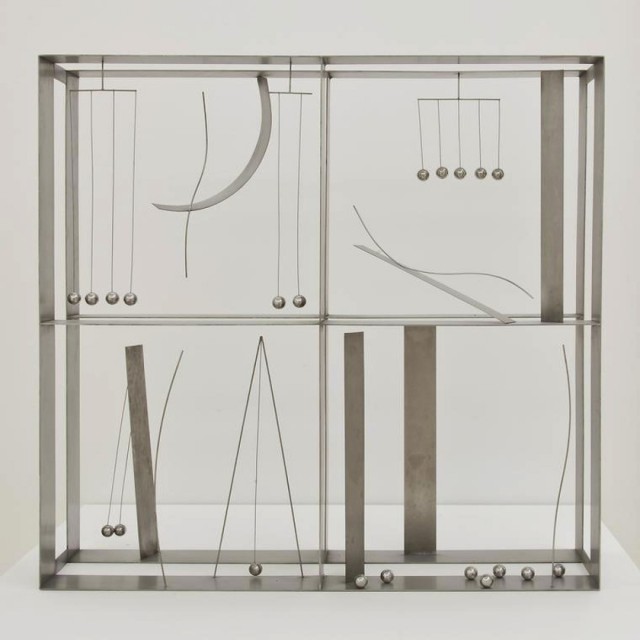The Madre Museum presents a major retrospective exhibition devoted to Fausto Melotti (Rovereto, 1901-Milan 1986), curated by Germano Celant and organized in collaboration with Marta Melotti and the Archivio Fausto Melotti .
Like his contemporaries Alexander Calder, Alberto Giacometti, Louise Bourgeois and Lucio Fontana, Melotti has long been recognized, both nationally and internationally, as a key figure in modern and contemporary sculpture. In the early thirties he was distinguished as one of the most significant figures in the renewal and development of the vocabulary of material and plastic values. The artist’s particular skill at combining the classical tradition with the concerns of the European avant-garde, scientific knowledge with an outstanding musical sensibility, sculptural talent with a special flair for ceramics and a notable literary ability, and poetic creativity with refined drawing, are all qualities that have established him as one of the outstanding artistic talents of the twentieth century.
The exhibition at the Madre is laid out chronologically in the museum’s rooms, highlighting a selection of over 200 works, including terra cottas, majolicas and plasters, sculptures in mixed media and iron, ceramics and works in stainless steel, drawings and sketches, representing the strand in Melotti’s sculptures most closely related to the visual arts. Starting from his early work done at the start of the thirties when, after qualifying as a pianist and in musical composition and graduating in electrical engineering, he turned to the study of sculpture, learning the rules of the art, through the dematerialization and paring away the flesh from the human figure, in 1934-1935 Melotti came to compose his celebrated bas-reliefs which bear witness to his membership of the Abstract movement, together with Gino Ghiringhelli, Mauro Reggiani, Luigi Veronesi, Lucio Fontana and Atanasio Soldati. From his works executed in terra cotta or ceramic after World War II. At this time, “Melotti took refuge in the intimacy of small things, made in ceramic and fired in the small kiln in his studio, as if to acknowledge the agony and death of an exemplary humanism, so shifting the focus from the classical world of forms and great ideals […] to a new subjectivity, which is now linked to a naturalistic and fabulous conception between being and the world” (Celant). He then produced the striking sculpture of I Sette Savi (“The Seven Sages”) 1960 (1969), in which the human figure was stripped to its essence and turned into an almost abstract dummy. The exhibits that follow display Melotti’s achievements as a ceramist during the fifties and others that he made in the remaining thirty years of work, when the renewed energy of a culture which had arisen from tragedy produced an unfailing series of extraordinary works. This was the period when his sculptures, made from gauze, brass, glass, fabric, ceramic and terracotta, float in and out of an endless journey of vitality in movement which seems to be continually rebuilt. In this context, special emphasis is placed on a series of sculptures that the artist produced with a continuity of formal and thematic treatments: the Teatrini (“Little Theaters”), a typology consisting of a framed house which may be either open or closed at the back and in which, often arranged on several different floors, appear objects, characters and figures evoking fantastic stories and tales. Intertwined with these sequences, the museum rooms contain other sculptural passages by Melotti associated with materials such as steel or embodied in the production of vases and objects in ceramic, including spectacular reliefs in which the colors and figures create stories and surprising images. “A stirring amid the recognized essences of a sculptural code, oscillating between the material register and mental impetus, between memory and experimentation, which enables Melotti to achieve continuous linguistic shifts to confer a systematic enchantment on his landscape as an artist” (Celant).
Although focused primarily on the sculptures and bas-reliefs, the exhibition at the Madre furnishes an opportunity for a more profound and analytical reading of Melotti’s complex achievement, notable for a particular stylistic versatility which enabled him to traverse the different fields of painting, sculpture, ceramics, poetry, drawing and music. A poetic universe that is set in history and story by the interweaving and osmosis of Melotti’s work and the vicissitudes of modern Italian and international culture.
